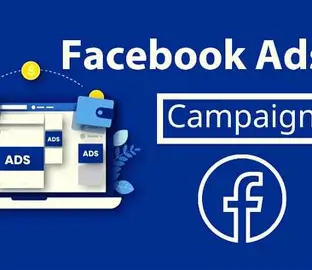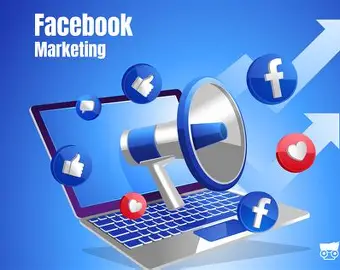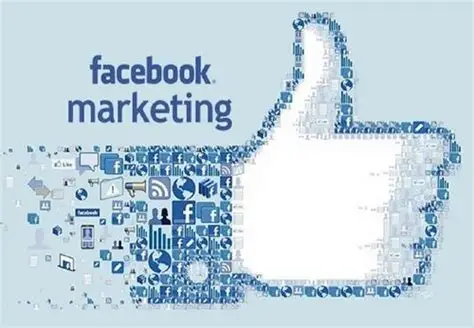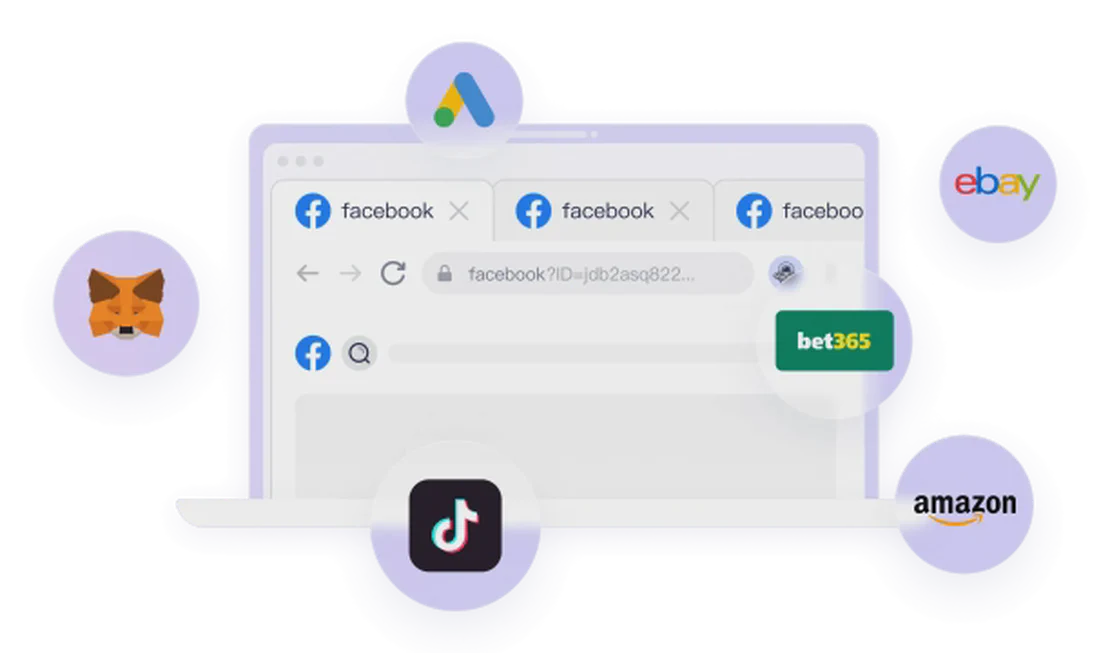As a marketer who’s been on the front lines of Facebook advertising for years, have you ever faced this frustration: you invest a fortune meticulously building a three-step funnel (Top, Middle, Bottom), only to find yourself in a tug-of-war with Meta’s algorithm? You try to “teach” the platform how to deliver your ads using a linear, human logic, while Meta, with its immense computing power, “selfishly” explores the optimal path within the very structure you so carefully built. Often, it feels like our elaborate plans are merely “datasets for the algorithm to learn from.”
What if there was a new method that lets you enjoy the dual benefits of both “funnel education” and “algorithmic optimization” at the same time? Wouldn’t you be willing to give it a try? This is precisely the quiet revolution happening in the world of Facebook advertising right now. A brand new “All-Funnel Campaign” structure is, with its incredible power, beginning to replace the traditional, step-by-step funnel models. This isn’t some distant theory; it’s a battle-tested strategy that has already been yielding outstanding results in our ad accounts.

A Look Back at the “Classic Funnel Trilogy”
To understand the brilliance of the new strategy, we must first review the old methods we’re familiar with. In the past, the standard playbook for Facebook/Instagram advertising was a carefully orchestrated “trilogy”:
- Top of Funnel (TOFU): Goal—Awareness. Ad content focused on “educating the market,” describing the problems users face and introducing your brand as a potential solution. KPIs were brand impressions and reach.
- Middle of Funnel (MOFU): Goal—Interest. Ad content highlighted the features and value proposition of your products/services, showing people who already knew your brand “why to choose us.”
- Bottom of Funnel (BOFU): Goal—Conversion. Ad content was direct and aggressive, including product showcases, customer testimonials, limited-time offers, etc., aimed at pushing users to buy or inquire.
This logic perfectly aligned with classic consumer behavior models, making it the “gospel” of ad delivery for many years.
However, the passage of time brought two key turning points:
- Meta’s Evolution: Meta’s ad platform grew incredibly intelligent, capable of precisely identifying users who were “about to buy” or “about to inquire.”
- The Pursuit of Efficiency: Savvy advertisers discovered that by skipping the costly “Top of Funnel” and focusing on a “Middle and Bottom” hybrid, they could achieve better short-term returns on ad spend (ROAS).
Consequently, a simplified “single-step sales funnel” emerged. But this created a new problem: the “boiling a frog” effect. You can quickly convert a batch of high-intent users through precise targeting, but this group is finite. Once they’re exhausted, your ad performance plummets because there’s no new, broad “top-funnel traffic” to continuously feed the “bottom of the funnel” with “prospects.”
The Birth of a New Era: One Campaign, One Ad Set, and Meta Handles the Rest
Now, let’s embrace this “new world.” The most effective ad structure proven in 2025 is surprisingly simple to the point of elegance: one campaign, one ad set, but with a world of complexity inside.
Structural Advantage: Combining Breadth and Depth
The genius of this structure lies in its ability to fuse the multi-stage education of a funnel with the personalized delivery of an algorithm, all within one campaign and one ad set.
- Single Ad Set, Multi-Unit Synergy: You only need to set up one ad set, targeting an audience mix of cold and warm traffic. This includes your core audiences (interest-based), lookalikes, and website visitors for remarketing.
- Creative Diversity, Empowering the Algorithm: The heart of this ad set is housing numerous, varied ad creatives. This is the absolute key to executing this strategy. You need to prepare different types of creative assets, for example:
- TOFU Ads: Educational content that explains the problems your product solves, creating resonance.
- MOFU Ads: Value-based content that showcases how your product works and its unique advantages.
- BOFU Ads: Conversion-oriented content that sells directly, including testimonials and strong calls-to-action (CTAs).
Meta’s intelligent delivery system is now sophisticated enough to act like a commander-in-chief, allocating different creatives to users at different stages of awareness within the same ad set. For a new user who just heard of your brand, Meta might first show your TOFU educational ad. For a returning user who has visited your website, Meta will skip the warm-up and directly serve a BOFU conversion ad.
This achieves two massive leaps forward:
- Ultimate Budget Efficiency: Every dollar is spent where it has the most impact. High-intent users are converted quickly, while low-intent users are patiently nurtured—all automated, without manual intervention.
- Genuinely Personalized Experience: The ad a user sees is perfectly matched to their stage of awareness. This dramatically improves user experience and effectively prevents ad fatigue.
Tactical Wisdom: How to Optimize Your “All-Funnel Campaign”
Faced with this new dynamic, we must abandon our old optimization habits.
- The Wrong Way: Monitor the “cost per result” or “ROAS” of individual ads and immediately turn off the ones that perform poorly.
- The Right Way: Pay attention to where Meta is actually spending your money. After your campaign has been running for a few days, you’ll notice the budget will concentrate on just 2 or 3 of your ad creatives. Those creatives that consistently get no spend are the ones Meta has deemed “underperforming” or have “completed their job” (e.g., a top-funnel ad that successfully educated the audience). We should turn off these “zero-spend” ads, not the ones with a bad ROAS that might be playing a crucial role.
An interesting sign: if you, based on a gut feeling, turn off an ad with a poor ROAS and then notice the cost of conversion for all your other ads skyrockets, congratulations, you’ve likely just turned off the “top-of-funnel” ad for your entire campaign!
The Audience Targeting Fallacy: Why We Don’t Need Multiple Ad Sets
Many advertisers insist on separating cold and warm traffic into different ad sets. However, a “truth” about Meta’s platform through experimentation: when you set your targeting, apart from hard constraints like location, most of your targeting options (like custom audiences) are treated as “Suggestions,” not “Commands.”
This means that even if you “suggest” both “website visitors” and a “lookalike audience” in one ad set, to achieve the best performance, Meta may choose to show your ads to a large number of “new users” who are not on your list. Therefore, splitting your cold and warm traffic into multiple ad sets has little effect on the final audience reach. This not only adds management complexity but, more importantly, it disperses budget and conversion data, slowing down Meta’s learning process. Consolidating all your budget and conversions in one ad set is the best way to help the algorithm learn and optimize quickly.

From Strategy to Scalable Operations: When Success Needs to be Replicated
The power of the “All-Funnel Campaign” strategy lies in its ability to achieve complex, multi-stage outreach with a single structure, dramatically improving the efficiency and effectiveness of a single campaign. Once you’ve successfully crafted an advertising model that efficiently acquires customers and is profitable, a new, larger challenge emerges: scaling.
Marketing is no longer a “guerrilla war” on a single channel, but a “positional war” across multiple platforms, multiple accounts, and even multiple product lines. You might want to test different ad creatives on Facebook, establish separate ad accounts for different product lines, or expand your reach through affiliate marketing.
This immediately raises a “ghost” that all operators at scale cannot avoid—the risk of association. When you manage multiple Facebook/Instagram accounts for testing and scaling, if all these accounts are operated from the same IP address, the same computer, and the same browser environment, Meta’s risk control system can easily link these “behaviorally similar” accounts together, identifying them as belonging to the same “advertiser.” This “multi-account association” can at best limit your ad delivery and at worst lead to an outright ban, destroying the ad assets you’ve worked so hard to build.
It’s like you’ve finally found the key to a “treasure,” only to discover the treasure’s door is locked by a chain of “association.” This is when you need a more advanced “master key” to unlock the chain and safely claim your spoils. FlashID Anti-Detect Browser is precisely this “master key” that allows you to move from “point success” to “full-scale deployment.”
- A Kaleidoscope of Digital Identities: The core value of FlashID is its ability to create a completely independent, isolated “digital identity” for every advertising account you manage. This means each account has its own unique IP address, browser fingerprint, timezone, language, etc. In Meta’s eyes, these are numerous, unrelated users from different corners of the world running ad campaigns, which perfectly circumvents the risk of “account association,” making your ad assets indestructible on the path to expansion.
- Automation that Frees Your Hands: The success of the “All-Funnel Campaign” strategy requires continuous A/B testing and creating new ad creatives to replace underperforming ones. When the number of your ad accounts grows from single digits to the tens or hundreds, manual management becomes impractical. FlashID’s built-in RPA automation and window synchronization features allow you to, in a single interface, perform batch, automated operations across all your accounts—creating ads, uploading creatives, and analyzing data—freeing marketers from tedious, repetitive labor and truly achieving profitable scaling.
- Flexible, Cross-Platform Solutions: Your battlefield is not just on Facebook. Google Ads, TikTok, Pinterest, and other platforms are crucial channels for acquiring customers. FlashID’s Cloud Phone feature provides you with a cloud-based Android OS, allowing you to securely and efficiently manage ad accounts that require phone verification or in-app operations from a mobile perspective, achieving one-stop, cross-platform, multi-account management from the web to mobile.
In short, we learn about the “All-Funnel Campaign” strategy to make one campaign as effective as possible. When we use FlashID, it is to ensure your remarkably successful ad strategy can be safely, efficiently, and infinitely replicated and expanded upon, ultimately building a truly powerful and resilient business empire.

Frequently Asked Questions (FAQ)
Q: Why is the “All-Funnel Campaign” considered the new trend for 2025? What old problem does it solve?
A: It solves the problem of low budget efficiency in traditional funnels due to manual stage separation, and the issue of long-term customer growth stunting in simplified “single-step funnels” due to the lack of “top-funnel” education. It cleverly uses Meta’s algorithm to achieve personalized, multi-stage delivery within one structure.
Q: What is the core of the “All-Funnel Campaign”? Is it just about putting all my ad creatives in one place?
A: The core is “one ad set + creative diversity.” Simply putting all creatives in is not enough. You must consciously prepare creatives for different stages (problem awareness, value proposition, direct conversion) to provide the “ammunition” for Meta to perform its funnel-based delivery.
Q: How many different ad creatives should I use?
A: There’s no magic number, but the more, the better. The goal is to cover the different levels of the “awareness ladder.” You can start with 6-10 creatives of different styles and then continuously iterate and supplement based on performance data.
Q: With this new structure, how should I view and optimize ads with low ROAS (Return on Ad Spend) but that are still receiving budget?
A: Don’t turn it off easily! This might be the ad Meta is using for “top-funnel awareness” or “brand building.” You should focus on the overall performance of the campaign and optimize by turning off those creatives that consistently get “zero spend,” not based on the ROAS of a single ad.
Q: By mixing cold and warm traffic in one ad set, won’t it dilute my conversion results?
A: No. Meta’s algorithm is excellent at deciding which ad to show based on a user’s historical behavior (e.g., whether they visited your website). Doing so not only won’t dilute performance but will help the algorithm learn faster due to more concentrated budget, leading to better overall returns.
Q: I’m in the service industry; is this “All-Funnel Campaign” strategy also applicable?
A: Yes, very much so. Just replace the product ads with service value propositions, for example:
- TOFU: “Are you also struggling with [a specific industry pain point]?”
- MOFU: “We solve your problem by using our [unique method].”
- BOFU: “See what our clients have to say, book a free consultation now.”
Q: How can I be sure Meta is actually executing a “funnel strategy” within my single ad set?
A: A common sign is you’ll see a peculiar budget allocation within your ad set. For instance, a well-made ad with a mediocre ROAS gets a huge budget, while another direct product ad gets little spend but amazing conversion. The former is very likely your “educational ad.”
Q: If this new strategy is “all-powerful,” are there any limitations or situations where it might not be suitable?
A: For hyper-niche, highly customized B2B businesses with extremely high-value deals, or for brands where brand awareness isn’t the primary goal (e.g., a brand with only one hit product), the traditional, more granular structure may still have its value. But for 99% of standard e-commerce and service businesses, the “All-Funnel Campaign” is an excellent starting point.
Q: When I test and find a particular ad creative performs exceptionally well, should I create a separate ad set for it to increase its budget?
A: Generally, no. This would violate the core logic of the “All-Funnel Campaign”—to concentrate data in one place to help Meta learn. A better approach is to simply increase the budget of the entire campaign within that ad set, allowing the algorithm to continue using this “star creative” in synergy with others.
Q: When I’ve perfected my ad strategy, how do I safely scale my business without being banned by the platform?
A: This is the core pain point of scalable operations. When you have multiple ad accounts, you must use a tool like FlashID Fingerprint Browser to create a separate digital identity (IP, browser, etc.) for each account to prevent them from being flagged as associated by the platform, ensuring your business can scale safely and stably.
You May Also Like
